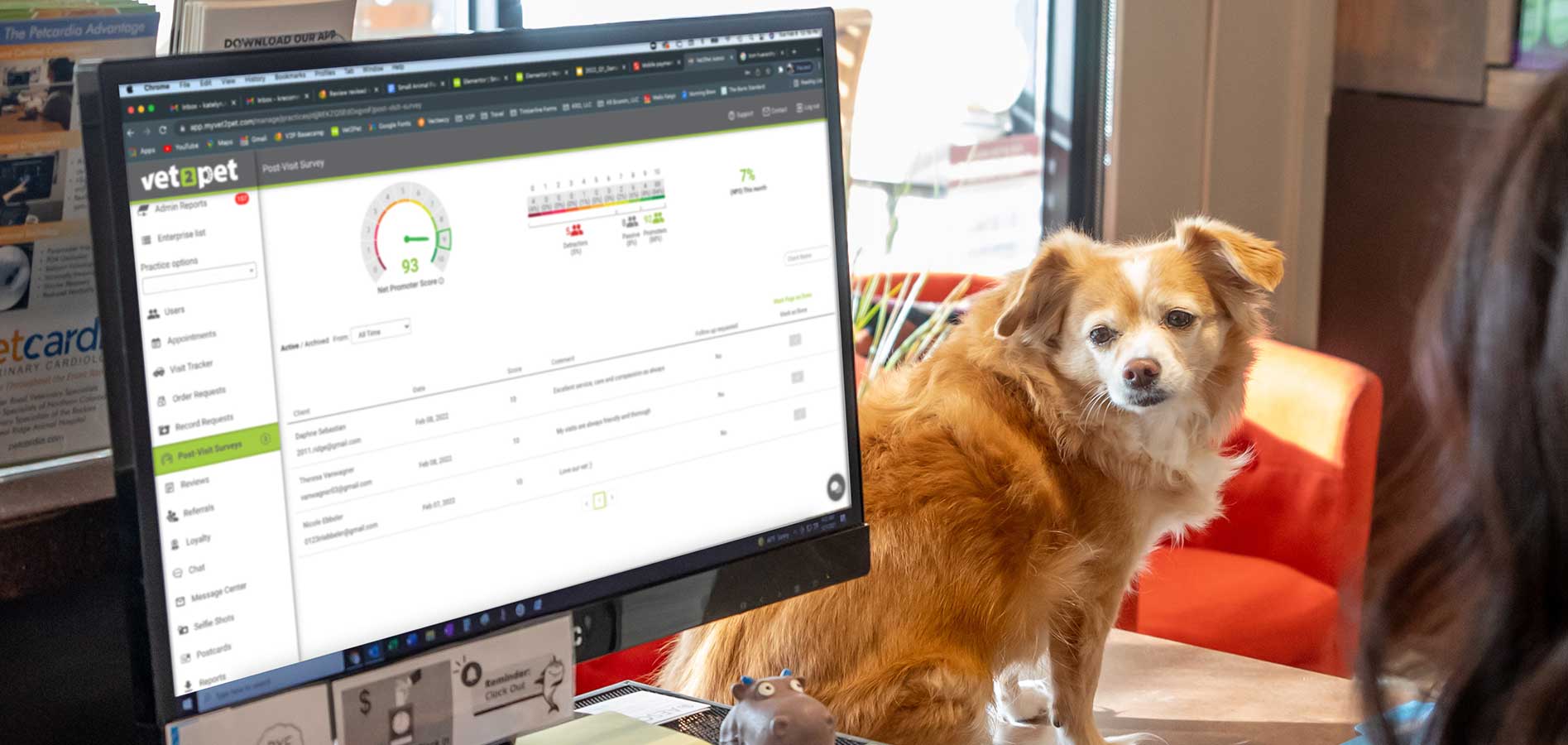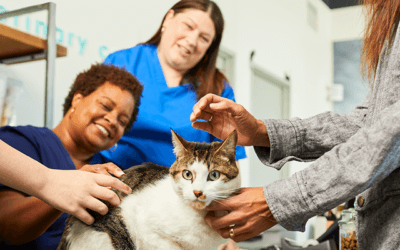
As veterinary professionals, we’d love to measure the success of our careers and businesses in the wagging tails and friendly nuzzles of our patients. But it’s not that simple. Instead, we have to rely on client feedback. Doing so allows our practices to best address concerns, reward successes, tailor future decisions, and ultimately provide better veterinary patient care and clinical outcomes.
Why do veterinary practices need client feedback?
For practices to be successful and profitable, client satisfaction must be high. A satisfied customer will be a loyal customer, leading to repeat patient visits, increased spending at the practice, more referrals of new clients and pets, and higher acceptance of recommended treatments, services, and products.
Many practices are quick to assume that a booked schedule or the absence of negative online reviews means that their customers are satisfied. Without any quantitative data to confirm that assumption, however, practices can miss opportunities. These opportunities include giving practices an avenue to address concerns, providing disgruntled clients a private “offline” space to share their feedback, reaffirming the strengths of the practice and team, identifying new client services and revenue streams, and receiving overall suggestions for continual improvement.

Collecting and analyzing client feedback
Just as veterinary professionals rely on statistically validated, evidence-based data to trust clinical diagnostic treatments, we should look at the numbers when calculating client satisfaction, too. Measuring client satisfaction regularly has been identified as a significant opportunity to increase veterinary visits.
There are many methods and tools to consider based on your practice’s needs and capabilities. Choose a measurement tool that works for your practice based on your technological capabilities, the practice’s goals, and, most importantly, the practice’s ability and commitment to analyzing and acting on client responses. The most common tool to utilize is a post-visit client survey.

Before you begin: Tips for collecting client feedback
- Before implementing post-visit surveys or any client satisfaction measuring tool, be sure that you build out (and test) a workflow to send the request, collect the data, get notified of responses, store the data, and actually look at the results.
- Know your “why” when asking questions—don’t ask questions for the sake of asking. What’s the biggest thing you want to know right now? Focus on one topic at a time, or consider rotating quarterly.
- Short, simple questions will increase the likelihood of responses. Avoid long sentences or multiple topics per question.
- Encourage your clients to participate. Let them know that their input will help shape improvements and future service in the practice.
- Consumer research indicates response rates can increase 10–20% by offering even a nominal incentive, such as a discount off their next visit or a small service (e.g., a free nail trim).
- Thank the client for their response—and follow-up if there was any negative feedback.
What to do with client feedback
Reviewing client satisfaction feedback is crucial to identify and repair discrepancies, to celebrate successes, and to dictate next steps.
Make reviewing your surveys and client feedback a priority and a regular task. A key staff member or the management team should have a policy in place for when and how client feedback is handled.
Example:
If a client survey returns with negative feedback, a manager calls them within three business days. All responses are summarized and discussed at each monthly management meeting.
Regularly schedule time with the entire staff to ensure everyone on the team has received the feedback, and that the appropriate steps will be or have been taken to correct or improve based on the feedback. Keep a running log of feedback over time to ensure an upward, or at least steady, trend of client satisfaction.

When we make the effort to collect client feedback, we can help address problems before they accumulate or show up as negative online reviews, gain reassurance and accolades for our team, identify new services and revenue streams, and grow as a practice full of loyal customers.
Collecting client feedback gives practices an opportunity to put numbers to opinions, so we can combine with new client referral numbers, online review numbers and rankings, and client retention data to create a comprehensive picture of practice success.
Start finding out how your veterinary clients feel so your practice can be the best it can be. Vetsource’s Vet2Pet client engagement system includes a Post-Visit Surveys feature, which allows you to create a customized survey form and automatically send the survey to clients following certain appointment types, or send the survey using other means—whichever works best for your practice. Surveys can be sent using a QR code or link in an email, text message, or push notification. Schedule a demo to learn more.



